Expedia Group
Introducing multi-item shopping for travel
Using design thinking and prototyping to shape a major product update
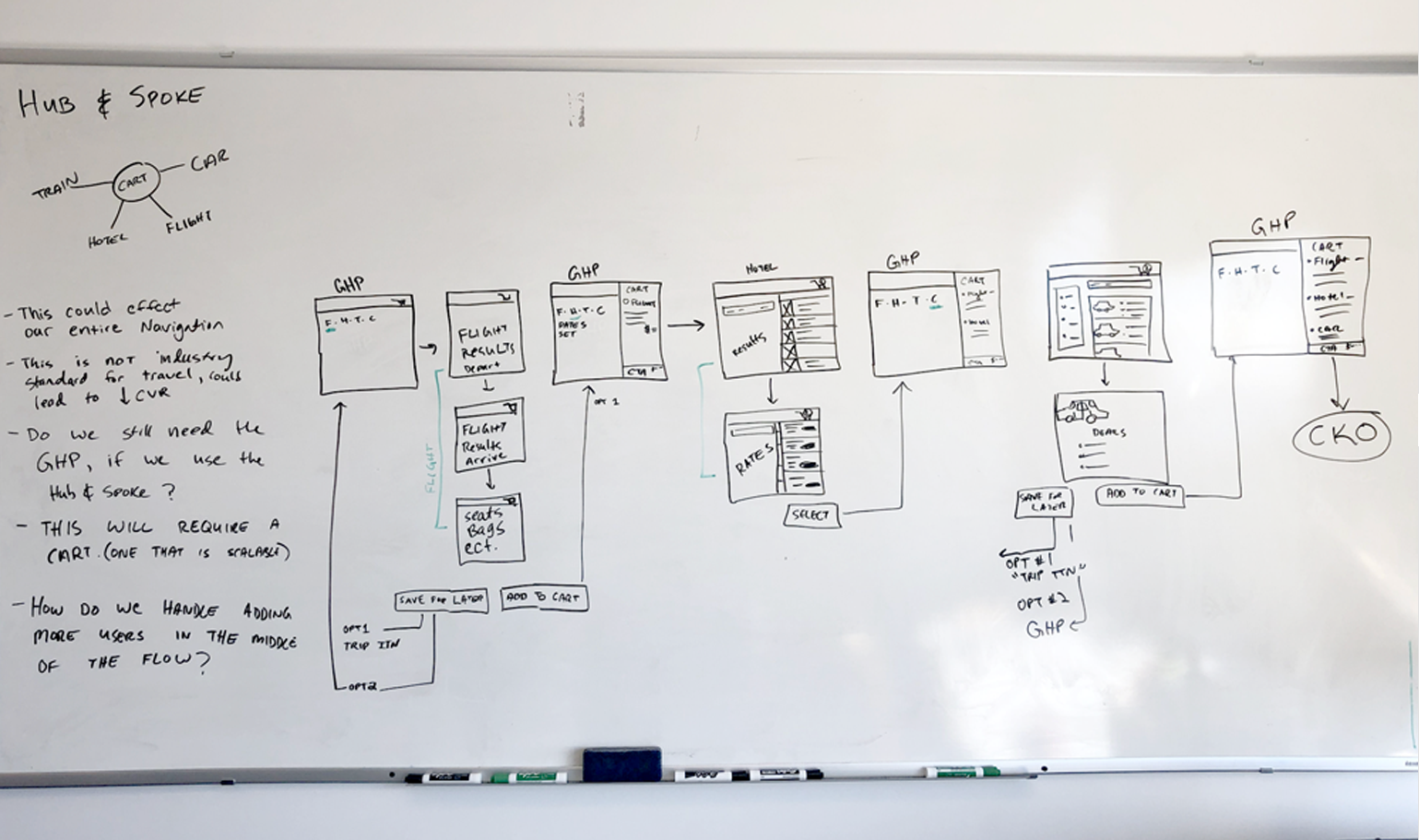
Context
A new way to book business travel
Egencia, Expedia Group's hub for business travel, worked very simply when I joined. Travelers had to book their airfare, hotel, and rental cars as separate transactions rather than in a single checkout. Our customers were hungry for a better way, and stakeholders across the company convened to solve this problem. I worked closely with two other designers as leaders of this new initiative, bringing everyone together to set a vision for multi-item shopping.
Project Goal
To create a multi-item shopping flow that allows customers to purchase any combination of flights, hotels, cars, and/or trains for any number of travelers.
It should be scalable and adaptable to any and all booking combinations and user types.
My role
User experience leader and facilitator
Collaborated to test and prototype multiple solutions
My design teammates and I researched different scenarios for multi-item shopping. We found there were two main routes most commonly seen: a checkout flow similar to eCommerce and bundling patterns from leisure travel. We worked together to create and user-test low-fidelity prototypes for both options. We analyzed the feedback from both to share at our upcoming design thinking sessions.
Led design thinking exercises and defined the roadmap
Over three days, 25 members of the cross-functional Egencia team gathered to set the project milestones. I led various design thinking exercises based on our research findings, including card sorting, rapid prototyping, and journey mapping, to help solidify the final experience. Using the outcomes of these exercises and our user research, we all defined a three-tiered roadmap for the initiative.
Owned design and execution of the collective vision
After our sessions, I became the lead designer on multi-item shopping. It was now my job to make these big ideas happen. I continued research with different user types, sketched out various iterations to test with travelers, and oversaw the design and implementation for the first step of our roadmap.
The three-tiered roadmap
Working together toward a north star solution
My teammates and I led the design thinking activities while always keeping our goal and research findings in mind. This allowed participants to empathize with users and question any assumptions they may have had going in. After several productive discussions, we landed on a final direction. Multi-item shopping was to include a page for travelers to review selections before checking out, giving them a hub to track progress and add or remove selections before booking.

The first customer traffic launch would only include adding a hotel to a flight booking, our most popular combination.
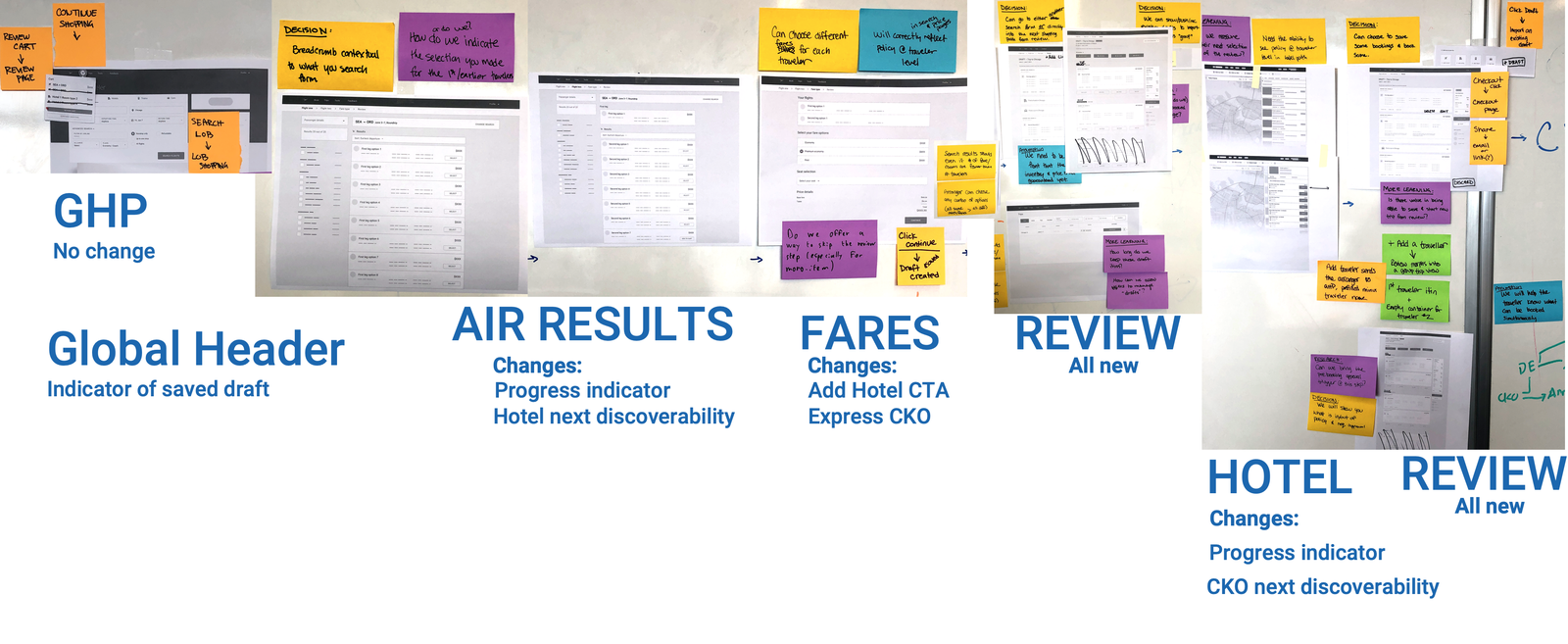
The low-complexity north star vision would add a page to review selections before checkout, but still only include air and hotel.

The final north star vision would let travelers save selections as a draft and add rental cars and train travel.
Next steps
Creating the simplest solution first
After our sessions, I became the lead designer on multi-item shopping. It was now my job to make these big ideas happen. I began by interviewing professional travel arrangers, a user group we hadn't yet accounted for in our initial research. Their feedback led me to tweak a few minor details and confirmed that our chosen direction would meet most of their needs.
I then began iterating on final designs for our first solution, including a simple module to add a hotel on the flight checkout page, allowing users to purchase both together. I tested three different placements and visual treatments to integrate this new functionality in the best way.
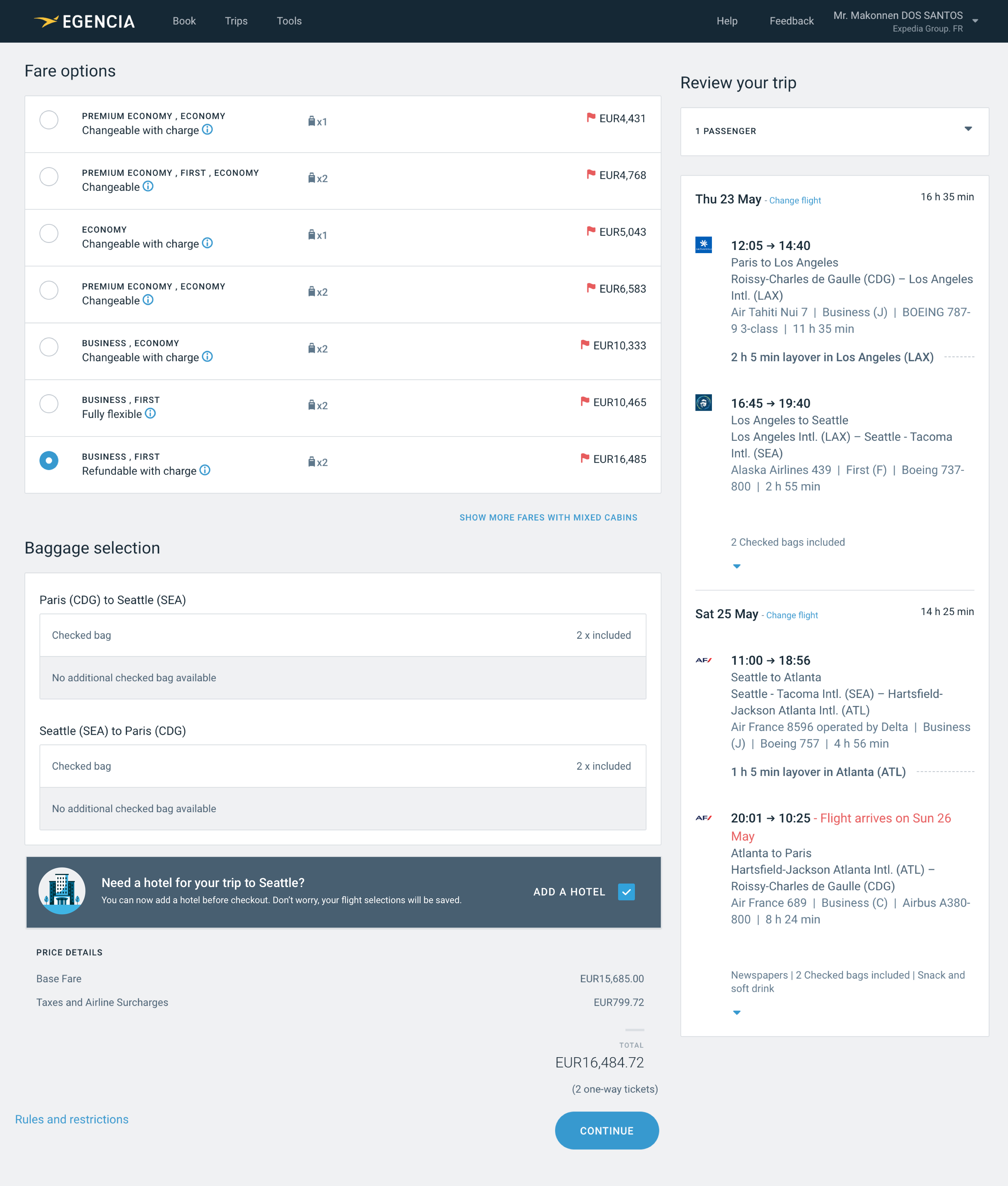
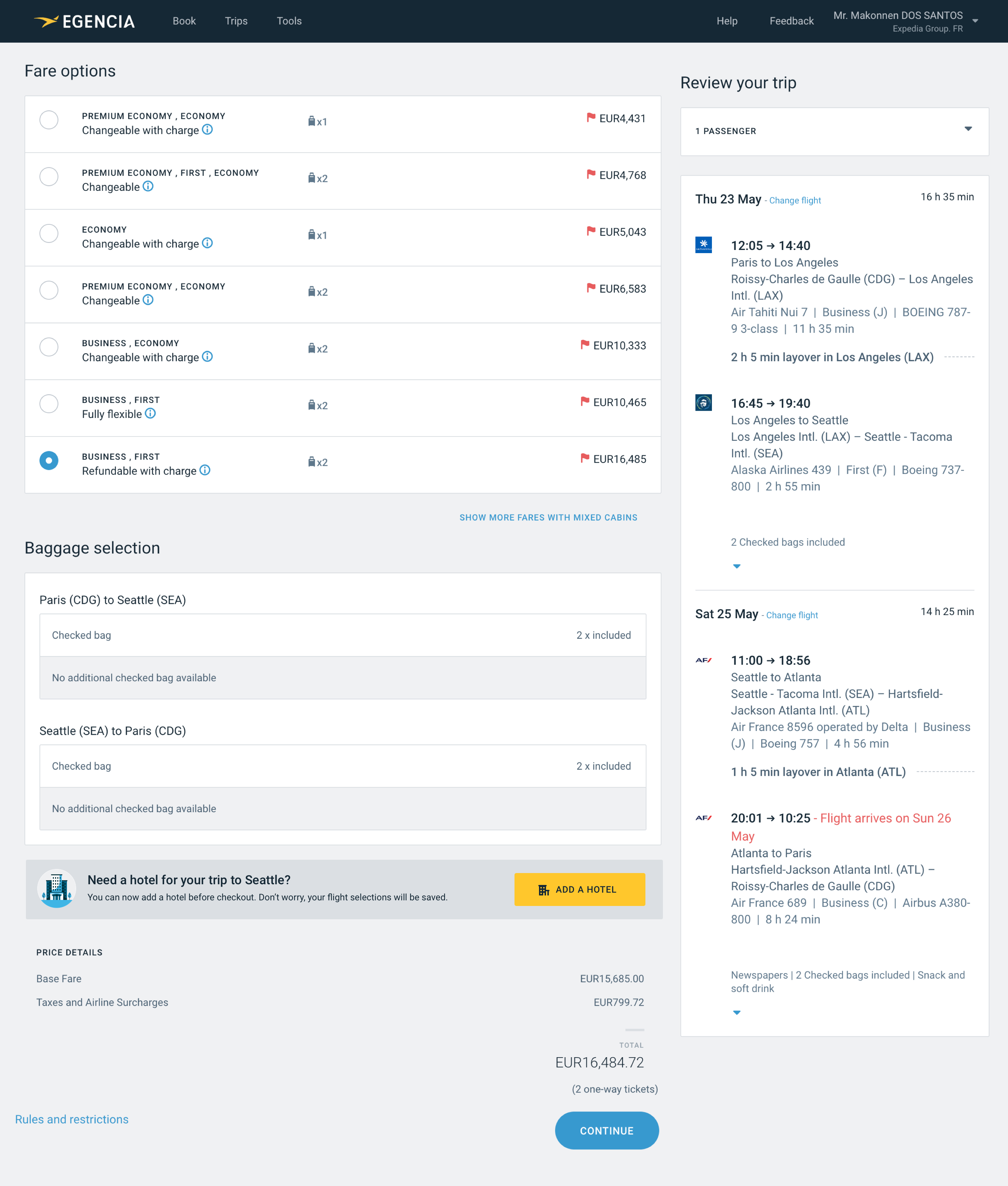
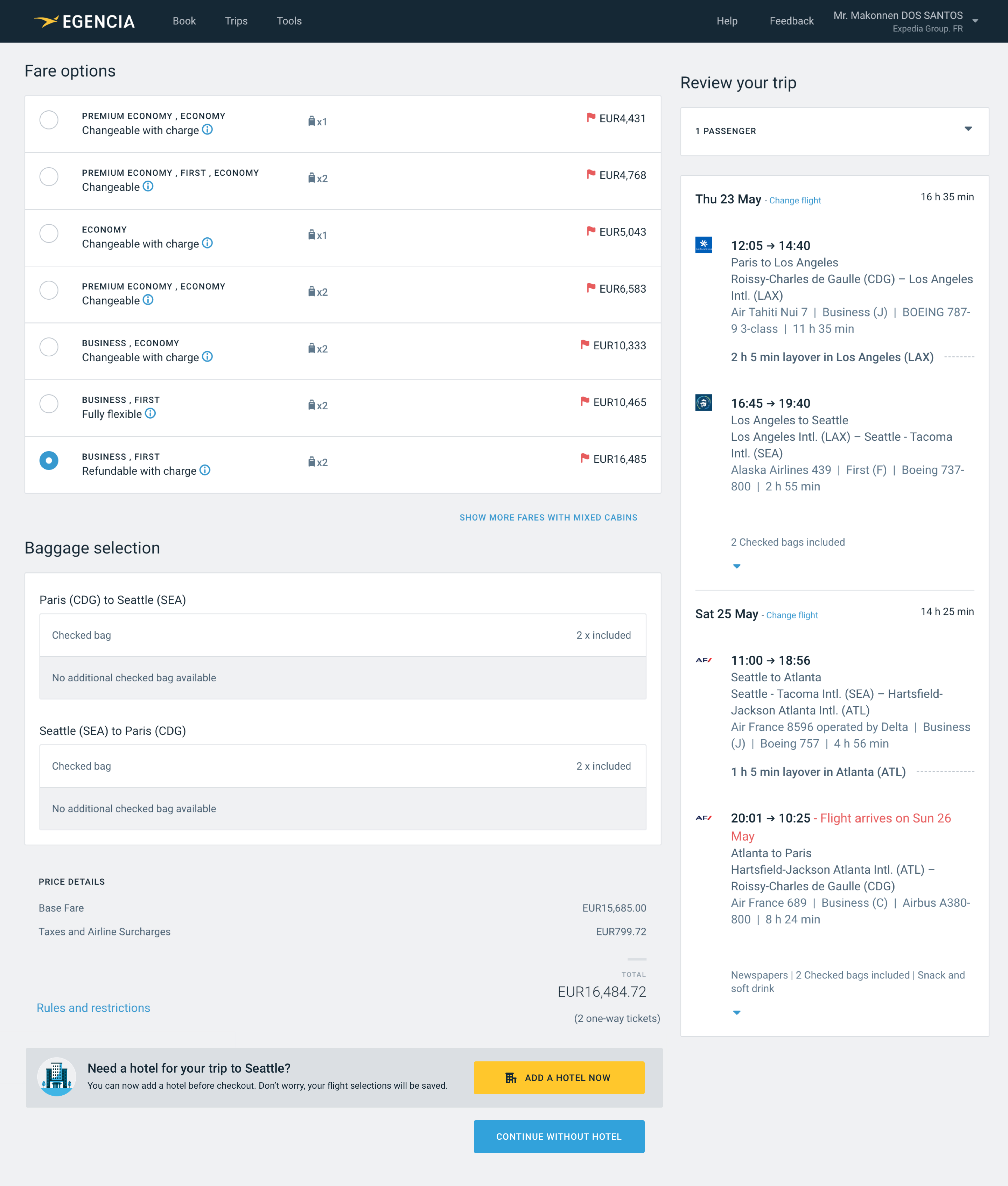
Three design options: a checkbox before price review, adding a button before price review, and a button after price review.
Testing process
Comparing results for three directions
Comparing the three different options, the test results best favored the third version, which placed adding a hotel in context with the button to continue. Users also favored keeping the visual treatment a middle ground between subdued and bold. It should stand out, but not so much that it becomes distracting.
When asked how they would rate the process of adding a hotel to their trip, users gave the winning design the highest score, a 4.8/5. It was decided, this would be our first iteration of multi-item shopping.
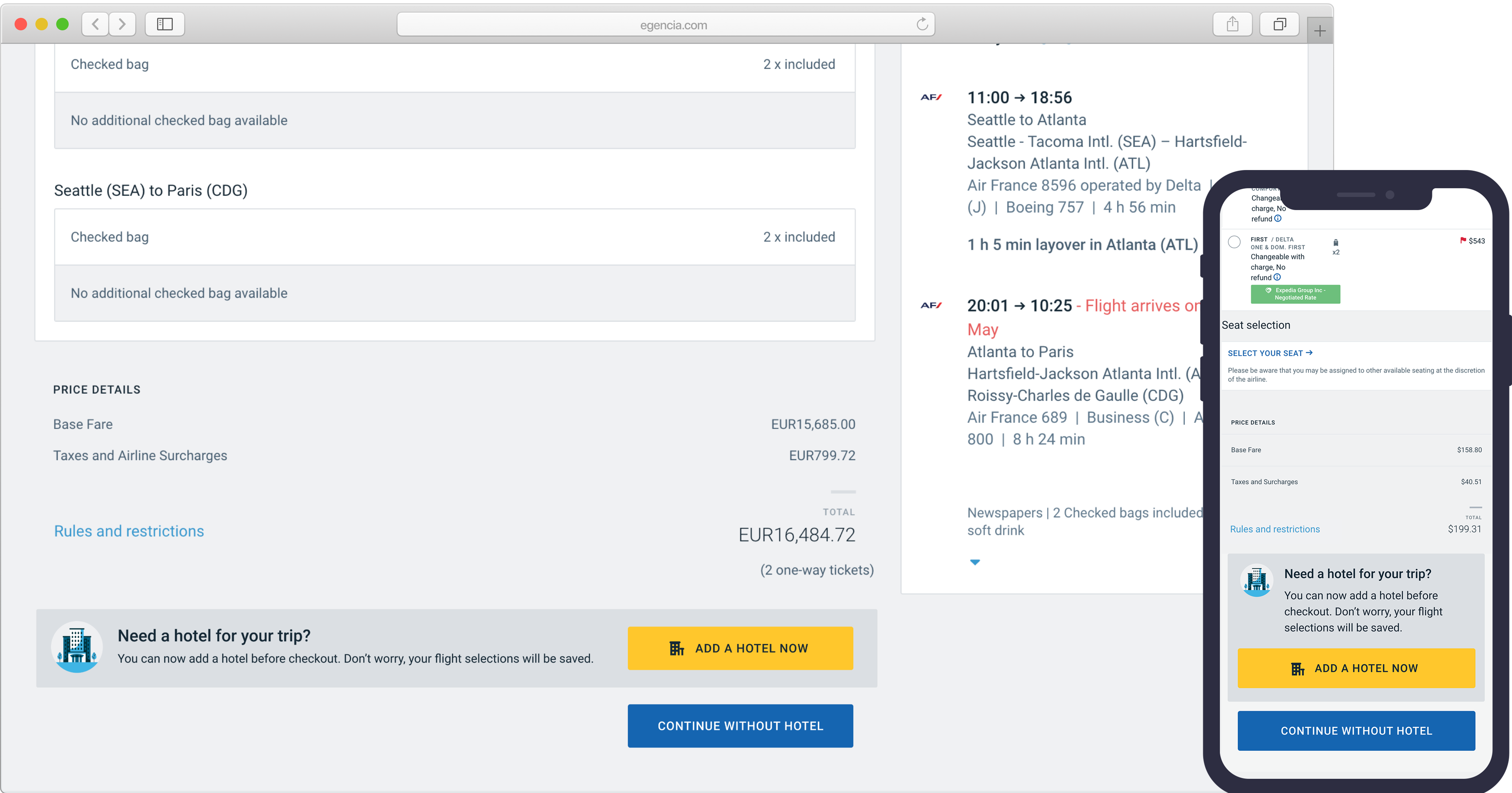
The final designs for first customer traffic.
The impact
This initiative redefined how we approached product problems at Egencia. Because multi-item shopping had implications across pods, which were separated by page and booking type, it was paramount that we all work together to come up with the final direction. The design thinking exercises set a precedent that would be carried out in future projects, expanding cross-collaboration and leading to better solutions.
It also showed how we didn't have to fear blue sky thinking. Partners outside of product and design now saw the value of establishing a long-term roadmap, even if the first change would be minor. I left Egencia before seeing the results, but I felt confident that multi-item shopping was on the way to being a massive win for our travelers.
More projects
© Sarah Gorman 2023